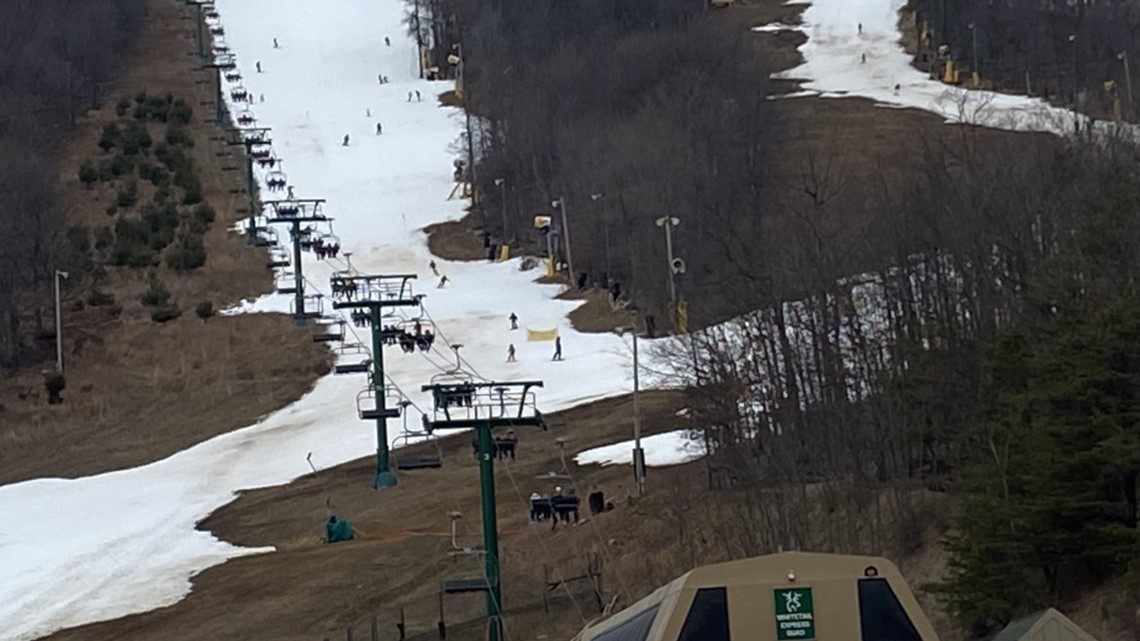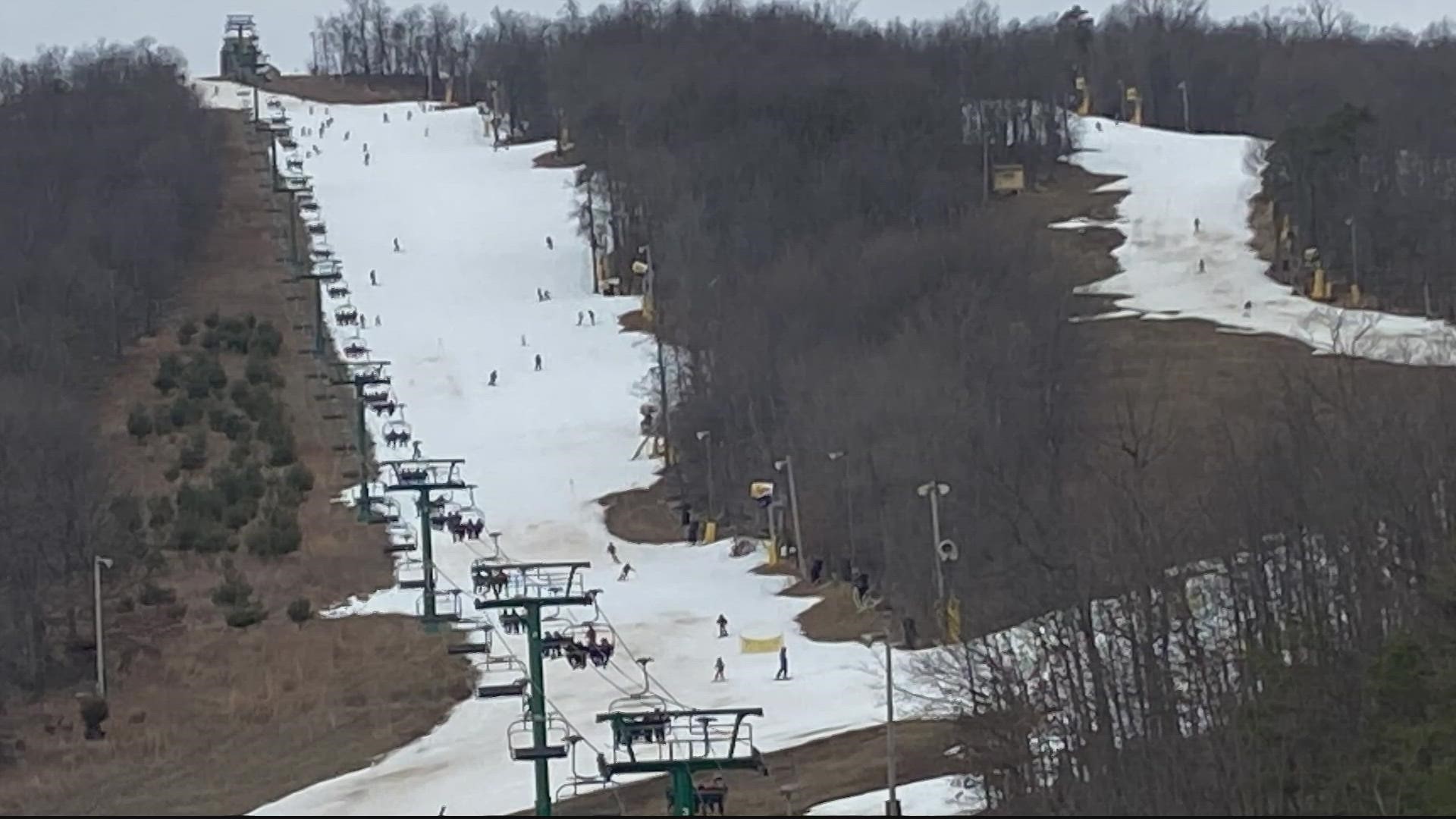WASHINGTON — The upcoming long holiday weekend is a very popular time for skiers and snowboarders to hit the slopes and a lucrative opportunity for local resorts.
While Whitetail Resort had to temporarily close as a result of the recent warm and wet weather, the messaging is that it won’t be closed for long. The staff at Whitetail Resort are gearing up for a brief, but efficient, snow-making window.
“We have to be able and agile and ready to respond with our snowmaking abilities and our snow-making systems in order to really take advantage of colder weather when it comes in so we can try to increase that snow cover, get our mountains open for the guests,” explains Jamie Alvarez, the Director of Communications for Vail Resorts which owned Whitetail.
Our record-warm winter has been hard on our local ski areas. The photo below was taken at Whitetail this past Sunday.


A live look at conditions can be found on the mountain's website.
The resort is banking on the brief cold snap arriving tomorrow to fire up their snow-making machines. Which, thanks to a $3.6 million investment into sustainability across Vail resorts last year, are better than ever.
"We can now make more snow in less time with less energy which is so important,” Alvarez adds.
In today's changing climate, manmade snow is vital to the future of ski resorts.
"Snowmaking was nothing like it is today." Keith Wade of Fairmont, West Virginia has been visiting Timberline Mountain in Davis West Virginia for as long as he’s been on skis.
"Look at the mountain, look what they've done," exclaims Wade. "It's awesome."
"Snow gun technology is getting better and better every year and so we're embracing a lot of tower-mounted fan guns which bring a ton of efficiency to it and also allows us to make snow at higher temperatures," explains Tom Price, General Manager at Timberline Mountain in Davis West Virginia.
Efficiency is key in the large investment of snowmaking technology because the windows for snowmaking are becoming more erratic and less frequent, while still requiring a lot of energy and water. Snow-making machines at Timberline Mountain pump 6,500 gallons of water from local streams and ponds that recapture melted water per minute.
But snowmaking capabilities aren't always created equally.
Timberline Mountain in Davis, West Virginia averages 150 inches of annual snowfall, but so far this year only around 40 inches have fallen. But with the power of snowmaking, the base is up to 10 feet and the mountain is 100% open. But Timberline has elevation on their side. Temperatures are much colder at over 4000 feet of elevation where the mountain sits, versus around 850 feet where Whitetail Resort is. Whitetail is currently reporting a base depth of just 18 inches.
Snow-making systems aren't the only old, inefficient infrastructures being replaced. Price explains at Timberline, "the chair lifts are state of the art from Dopplmyer and they're super efficient."
Timberline Mountain has also upgraded its grooming system to more energy-effective machinery that relies on less diesel fuel.
Sustainable and environmentally conscious practices will be key moving forward in our changing climate. Because volatile weather swings are impacting different parts of the world in different ways.
Shortly after we rang in 2023, Mammoth Mountain in California had to close because of too much snow. In the first 10 days of Jan., the area picked up 13 feet. Making it the snowiest place on Earth! At the same time, more than 3,000 ski resorts in the French alps had to temporarily shutter their slopes as record warmth combined with torrential rain washed away December’s snowfall.
So how are ski areas staying open with such wild, unpredictable weather?
With many of our local ski areas falling under the ownership of Vail, when you purchase their season Epic Pass you gain access to all of them across the country.
Here is a full list of Vail-owned resorts.
So when Whitetail is closed or conditions just aren't favorable, you can head to Liberty in Franklin Pennsylvania, Roundtop in Lewisberry or Seven Springs in western PA. This business model so many ski management companies are adopting also ensures economic stability. For example, if a mid-Atlantic ski area has a low-profit year due to weather challenges, there are other properties to help cover the financial loss.

